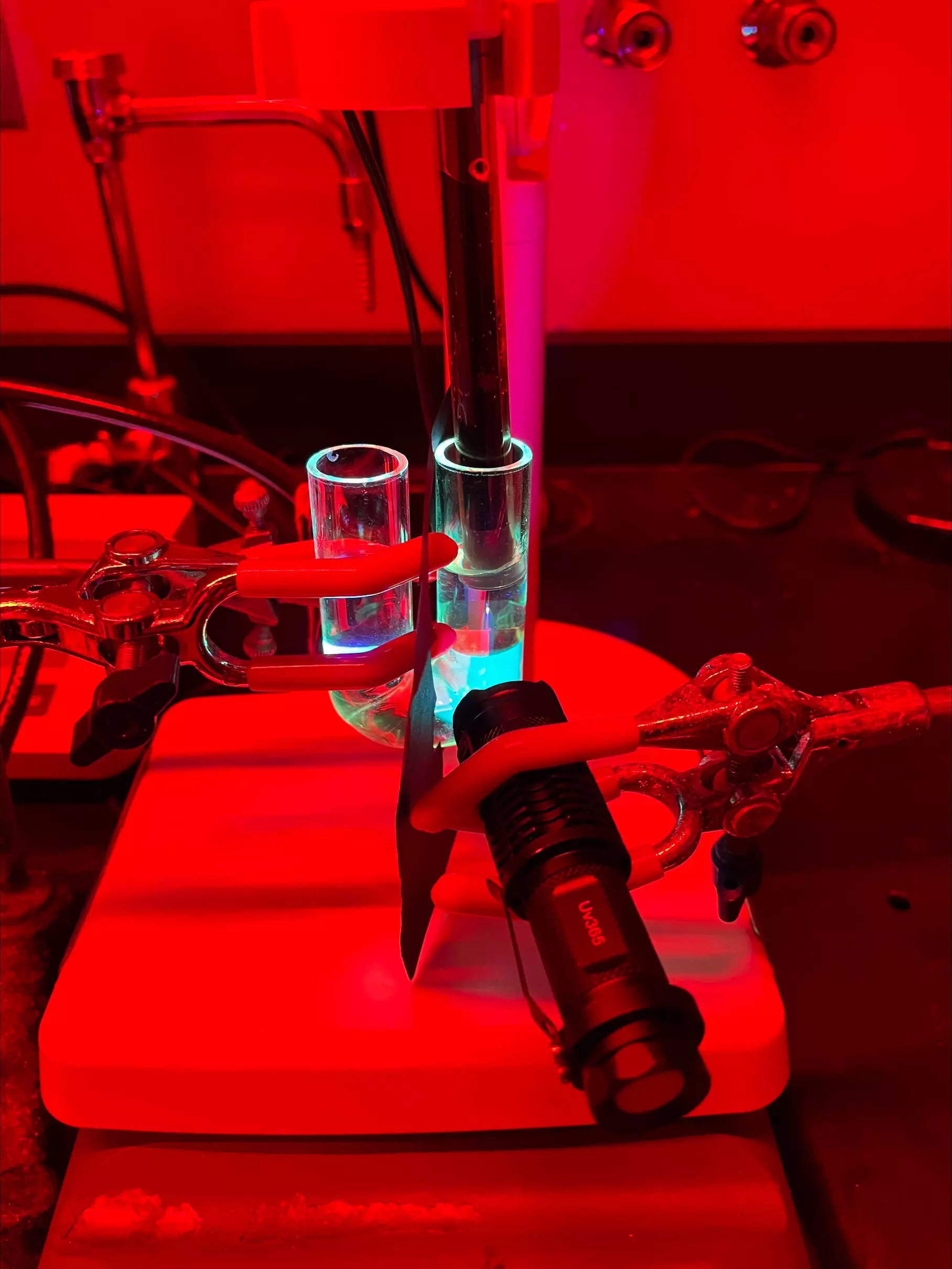In the quest for cleaner water sources, the researchers at Dartmouth College have made a significant breakthrough—an innovative self-powered pump that utilizes natural light to filter out specific water pollutants. As outlined in a recent publication in the journal Science, this technology harnesses light and synthetic chemistry to facilitate the removal of damaging contaminants from water systems. The ability of this pump to operate using renewable energy sources represents a paradigm shift in environmental science, potentially reshaping approaches to water purification.
The self-powered pump operates on a fascinating principle involving the activation of synthetic molecular receptors triggered by distinct wavelengths of light. These receptors are ingeniously designed to attract negatively charged ions, commonly known as anions, which are often responsible for environmental degradation and metabolic disorders in aquatic ecosystems. When water passes through the device, a specific wavelength prompts these synthetic receptors to bind with targeted pollutants, notably chloride and bromide ions.
A second wavelength plays a dual role, deactivating the receptors as water exits the pump and facilitating the release of the trapped contaminants. This is an essential step, as it ensures that the pollutants are held in a stable, non-reactive substrate until they can be safely disposed of. Ivan Aprahamian, a prominent figure in the project and chair of the Department of Chemistry at Dartmouth, emphasizes that this study serves as a compelling proof of concept for employing synthetic receptors to transmute light energy into chemical potential for pollutant extraction.
At its current stage, the pump is primarily effective against chloride and bromide pollutants, prevalent pollutants often encountered in stormwater and agricultural runoff. The objective is to broaden its application to tackle other problematic anion-rich pollutants, such as phosphates, nitrates, and even radioactive waste. This vow to expand the range of contaminants addressed by the pump underscores its potential for larger-scale environmental impact.
The idea of refining the pump to simultaneously target multiple pollutants is particularly intriguing. Aprahamian speculates that by employing different light wavelengths, it may be feasible to operate multiple receptors capable of selectively capturing various anions from a single water source. This versatility bolsters the pump’s potential use in diverse settings, from industrial discharge treatment to domestic wastewater management.
The researchers have focused on chloride ions for a number of compelling reasons, one being their prevalence in winter stormwater runoff where road salt significantly elevates chloride levels in aquatic habitats. High chloride concentrations can severely disrupt local ecosystems, affecting the health of plants and animals. Additionally, chloride transport is crucial for cellular health. For example, in cystic fibrosis, a genetic disorder, the inability of cells to manage chloride leads to serious health complications, including respiratory issues arising from mucus buildup.
The research team demonstrated the capability of this synthetic receptor by moving chloride ions from a low-concentration region to a high-concentration area, effectively reversing the natural diffusion gradient. This remarkable move resulted in an 8% displacement of chloride ions over a period of 12 hours, translating to an average distance of about 1.4 inches across a membrane—an astounding achievement when considering the minuscule size of the receptors involved.
The underlying technology leverages a class of compounds known as hydrazones, which can switch states in response to light exposure. This concept blossomed during the COVID-19 pandemic when Ph.D. student Baihao Shao proposed an enhancement to these receptors, allowing them to not only capture but also release target anions. Aprahamian initially hesitated, believing it would struggle to compete with existing technologies. However, Shao’s perseverance led to the successful design of the receptor.
In terms of practicality, the synthetic receptor is not only energy-efficient, utilizing light as a renewable energy source, but it is also relatively straightforward in terms of production using “click chemistry,” a methodology that allows for efficient assembly of molecules. This ease of fabrication opens the door to widespread utilization, potentially serving as a blueprint for future innovations in the realms of environmental remediation, drug delivery, and even health diagnostics.
The development of this self-powered pump marks a significant advancement in environmental science, illustrating how innovative uses of synthetic chemistry and natural phenomena can address pressing water pollution challenges. The aspiration is clear: by emulating biological processes and leveraging sunlight, researchers aim to create autonomous, self-sustaining filtration systems capable of thriving in diverse environmental conditions. The future of water purification may indeed lie in technologies that blend sustainability with cutting-edge scientific inquiry.


Leave a Reply